10 Iconic Art Pieces at the Guggenheim Museum That Captivate
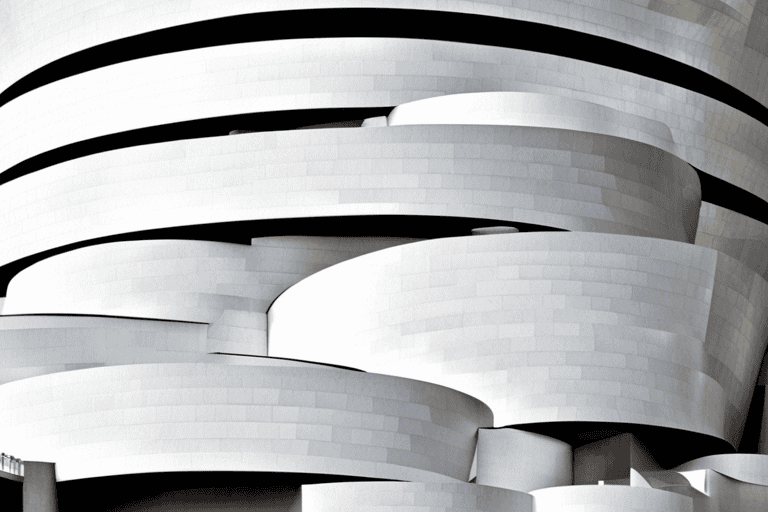
Has there ever been an artwork that you so admired that you felt time had stopped? Imagine yourself among the artistic masterpieces that fill every room of the world-famous Guggenheim Museum, where each brushstroke and sculpture tells its own story.
🎨 Welcome to a world where creativity knows no bounds and artistry has no limit. Let's travel into the Guggenheim Museum and find out the top 10 art pieces that will amaze you and set your creativity on fire.
💫 Step into a realm of dancing colors and volumes that speak out its voiceless story—breathe to life the vision of talented artists' work, timeless. Discover the magic behind each masterpiece and unveil the stories that lie within their intricacies.
Through this blog, let's walk the halls of creativity and learn more about artistic genius. So get ready to discover the beauty and brilliance behind ten iconic art pieces at the Guggenheim Museum that will make you an art enthusiast.
Explore the opulent past and architectural wonder of the Guggenheim Museum, designed by Frank Lloyd Wright. The collection features iconic works of art presented within their historical context and the cultural impact of such works. Immerse in early works by Gerhard Richter or a singular place through the Thannhauser Collection, featuring Impressionist and Post-Impressionist works. Experience form by Constantin Brancusi's sculptures or the abstract expressionism of Wassily Kandinsky and avant-garde art.
The Guggenheim Museum: A Brief History
One of the modern architectural masterpieces housing the Solomon R. Guggenheim Museum is the New York City branch, a work by Frank Lloyd Wright. The same was presented to the public in 1959 and, ever since has turned into an iconic cultural institution in the world of art.
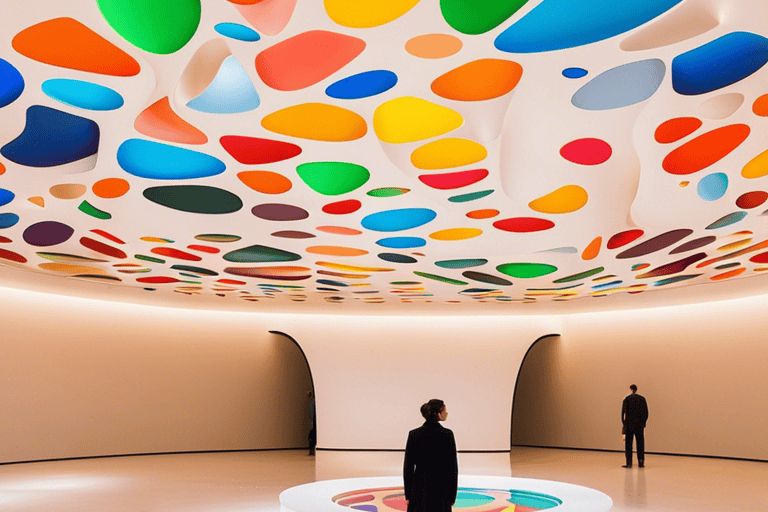
Architectural Wonder: Frank Lloyd Wright's Vision
Frank Lloyd Wright, an architect known to be organic in designing, had envisaged it more as a "temple of the spirit." The atypical design of the building, wholly circular in style, offers fresh departures from the way most museums are laid out and creates for visitors a unique and immersive art-viewing experience.
A Living Icon of Museum Design Innovation
This most iconic of spiral ramps created by the Guggenheim Museum acts like a continuous floor that lets the visitors view art in a nonstop flow, unconfined like other museum galleries. This innovative design influenced museum design everywhere and inspires architects and art lovers alike.
Saving and Showing Contemporary Art
The Guggenheim Museum collection reveals modern and contemporary art since it includes masterpieces of Kandinsky, Picasso, and Van Gogh. The Guggenheim Museum represents abstraction and non-objective art and, therefore, carries creativity and innovation in the scope of art.
A Cultural Landmark in New York City
Over time, the Guggenheim Museum has become a cultural landmark for New York City, to which all art connoisseurs and admirers run from every corner of the world. A rare combination of art, architecture, and history gives its visitors an extraordinary impression of the world of contemporary art.
Honoring Solomon R. Guggenheim's Legacy
The museum is a monument to modern art and, most of all, a helping hand to the young emergent artist. Collector and philanthropist Solomon R. Guggenheim founded it.
Powering Unforgettable Art Experiences
The Guggenheim is an experiential learning and engaging museum. It has numerous exhibitions, programs, and events that can gear up to the interests of art lovers from children to adults. Guided tours and interactive workshops—there is something for everyone in the museum and a sure guarantee that each visitor leaves with an increased appreciation for modern art.
Understanding Iconic Art Pieces
Visiting the Guggenheim Museum places one in a world where the creations of art say more than words can of the human experience and the outreaches of creative expression. We come into the heart of artistic icons that have held fast to the test of time and keep inspiring visitors worldwide.
![]()
Masterpieces' Exploration
-
Pablo Picasso's "Woman in White" (Keywords: Pablo Picasso, Woman in White)
The extraordinary representation of a fragmented woman is one example of Picasso's innovative style, Cubism.
Quote: "Art washes away from the soul the dust of everyday life." Pablo Picasso -
Vincent van Gogh's "Starry Night" (Keywords: Vincent van Gogh, Starry Night)
Van Gogh's swirling sky and vibrant colors evoke a sense of emotion and introspection in viewers.
Quote: "I dream my painting and then paint my dream." Vincent van Gogh -
Jackson Pollock's "Convergence" (Keywords: Jackson Pollock, Convergence)
The above classic masterpiece by Pollock is an abstract expression of dance of splashes of paint and energy, which welcome the viewer to draw from the reservoir.
- Bold strokes
- Chaotic but harmonious composition
- Dynamic and engaging visual experience
Showing the Stories Behind the Art
- Georgia O'Keeffe "Jimson Weed" (Keywords: Georgia O'Keeffe, Jimson Weed)
O'Keeffe's huge flower paintings extend understanding and appreciation of natural beauty.
- Detailed petals
- Intense colors
- Symbolism of femininity and power
- Mark Rothko's Color Field Paintings (Keywords: Mark Rothko, Color Field Paintings)
The enormous, light-filled Rothko canvasses hold the viewer as if within layers of color that conjure both thought and feeling.
"A picture lives by companionship, expanding and quickening in the eyes of the sensitive observer."
Richter in New York: Early Paintings
Gerhard Richter is ranked as the most influential artist of the 20th century. His early works were a mixture of abstract expressionism and photorealism, which rendered him famous in the art world. This essay will dwell on the early works of Richter that were exhibited at the Guggenheim Museum in New York, in which his exceptional talent and vision were perceptible.

Birth of an Icon
Richter's "Ema (Nude on a Staircase)" is one of the masterpieces that defies conventions in beauty and form. Light and shadow there interact in such a way to give the sense of almost movement like the subject is somehow in an ongoing flux. This masterpiece will testify that Richter attained unparalleled talent in epitomizing the human sense of being through his strokes.
The Synthesis of Realism and Abstraction
One of the earlier works by Richter, "Cathedral Window," is a vivid example of blurring the boundaries between realism and abstraction. In this painting, viewers find themselves sucked into its energetic, bright colors and details, then invited to search for the delicate balance between perception and interpretation.
Capturing Time's Essence
"October 18, 1977" is a work of art that unfolds in haunting depictions of this moment. With the help of the blurred imagery in subdued colors by Richter, the story is easily read: loneliness and the importance of turning to oneself with thoughts on the frailty of memory and the passing of time. Probably, that's an excellent example of how sometimes art can be so influential; it gets you to think and feel simultaneously.
Light and Shadow Play
In "Atlas Mountains," Richter managed to reproduce a play of chiaroscuro in an enchanting landscape. The delicate detail of brushwork and tonal change gives a sense of space and movement to the painting, which is a visual symphony that plays with one's senses and captures the mind.
Echoes of the Past
"Betty" has to be one of the most sensitive instances of Richter's dedication to his late wife. Behind its mysterious quality lies something nostalgic, a feeling that looks back to the timeless beauty of love and loss. Through light and form, carefully handled, Richter takes one to the very core of memory and emotion in this masterpiece of the ages.
Thannhauser Collection
The Thannhauser Collection at the Guggenheim Museum is a breathtaking collection of works of art that showed modern art in its making. It is hard to imagine the world of art without the strong influence this vast collection of iconic pieces has on people.
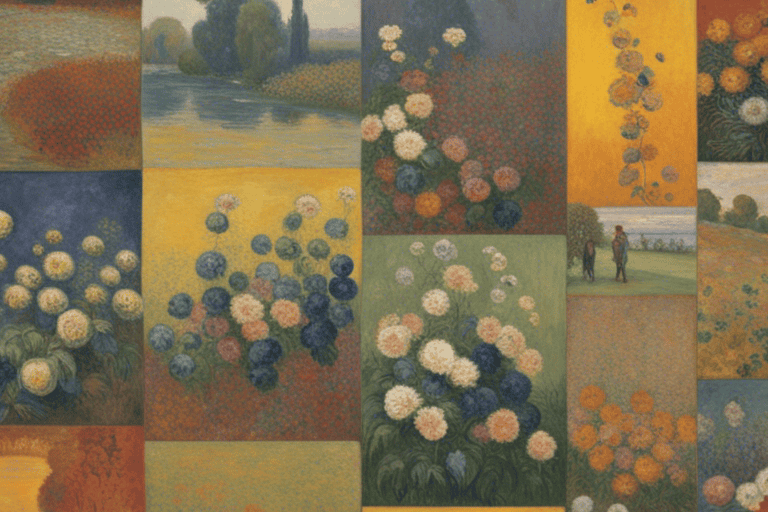
Impressionist Delights: A Look at the Thannhauser Collection
The Thannhauser Collection speaks of an outstanding choice of works by the Impressionists, including such masterpieces as Claude Monet, Paul Cézanne, and Vincent van Gogh. Their masterpieces ingeniously convey the very core of the Impressionist movement with vibrant colors and original brushwork.
Post-Impressionist Gems: The Thannhauser Legacy
Progressing from Impressionism to Post-Impressionism, the Thannhauser Collection hosts artists like Paul Gauguin and Pierre Bonnard—far from previous conventional artistic norms and searching for new ways the capture light, color, and even emotion.
Cubism Revealed: A Modern Art Revolution
The Thannhauser Collection has some masterpieces in which none of the comparisons could be found; it is an unparalleled Cubist art display with Cubist paintings from the hands of Pablo Picasso and Georges Braque. These seminal works have utterly changed former views about the world and brought into the art world such feats as fragmented forms and multiple viewpoints.
Expressionist Wonders: Embracing Emotion and Subject
Immerse yourself in Expressionism with this astounding selection of paintings by artists such as Ernst Ludwig Kirchner and Emil Nolde from the Thannhauser Collection. These works describe deep emotional domains and present solid feelings and an inner experience shown by light colors and sharp contrasts.
Securing the Thannhauser Legacy: A Testament to Artistic Brilliance
The Thannhauser Collection is truly the collection of the vision and sagacity of Justin K. Thannhauser himself, who dedicated his life to Modern Art. Every single work testifies to the power of artistic expression and endurance—that legacy is—the blaze of trail left by the artist.
Brancusi's Sculptures: The Essence of Form
A look at the iconic art pieces at the Guggenheim Museum cannot be complete without mentioning Brancusi's Sculptures, which best represent the form of a thing and which have provided indelible in the world of art. Let's plunge into Constantin Brancusi's mastery and his captivating sculptures.

The Visionary Artist: Constantin Brancusi
Constantin Brancusi, a Romanian sculptor, is undoubtedly one of the great innovative personalities in the field and a pioneer who influenced the making of modern art. His study of form, simplicity, and abstraction has significantly shifted our comprehension of sculptures.
The Endless Search for Essence
Brancusi worked zealously for the essence or the soul of a subject matter. He believed in paring away superficial detail and revealing the core of an object; he made pure, elemental sculptures that are deeply expressive.
Elegant in Infinite Simplicity
The simplicity of form and elegance that it possesses shows the working mastery of Brancusi. Modern but timeless, this sleek, streamlined sculpture in the shape of a bird in space captures the feeling of flight and freedom.
Sculpting Light and Shadow
The sculptures of Brancusi play with light and shadow, creating dynamic visual effects that improve the aesthetics for a viewer. How his pieces interact with light enhances the viewing of different textures, shapes, and emotions, hence adding yet one more layer of depth to his work.
Innovation Heritage
Brancusi has linked his legacy with his tangible sculptures, revolutionary conceptions of the nature of art, material form, and spiritual meaning, which have further motivated both creators and lovers of art worldwide.
Brancusi Quotes
- "Simplicity is not an end in art, but one arrives at simplicity despite oneself, in approaching the real sense of things."
- "What is real is not the external form but the essence of things."
- "Work like a slave: command like a king; create like a god."
Key takeaway
The Brancusi sculptures inside the Guggenheim Museum embody form, simplicity, and timeless elegance.
Explanation
This section of Brancusi's Sculptures corresponds to the writing goals in that it has presented insightful and informative content on the sculptor and his iconic works by providing references through quotes, and enhances.
Kandinsky's Abstract Expressionism
Kandinsky's Abstract Expressionism at the Guggenheim: Plunge into Color and Emotion.
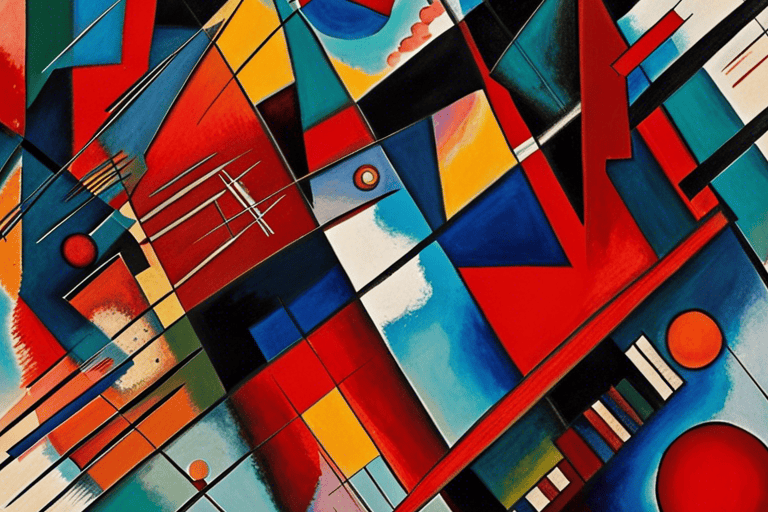
Wassily Kandinsky's Influence:
The famous Russian artist said to be the father of abstract art, Wassily Kandinsky, showcases his revolutionary abstract expressionism at the Guggenheim Museum. His significant influence in the art world is captured in every brushstroke, filling in the essence of color and emotion in one performance bound to capture your mind.
Exploring the Depths of Abstraction:
Enter a world of vibrant colors and dynamic forms as Kandinsky's creations blur all lines set within art. His abstract compositions are energized by a sense of freedom and spontaneity, urging one to see the artwork from a very personal point of view.
The Symphony of Colors:
In his artistic style, Kandinsky choreographed a symphony of colors speaking to the soul. Each of the works he created speaks with raw emotion: from the expression of passion through bold reds to the calming tranquility that speaks from deep blues. With his brilliant use of color theory, his works did reach an unmatched level of visual harmony.
Kandinsky's Quotes
- "Color is a power that directly influences the soul."
- "The artist should not only train his eye but also his soul."
- "Everything starts from a dot."
Key Elements of Kandinsky's Abstract Expressionism:
-
Geometric Abstraction: The geometric forms and lines of Kandinsky order the chaos in the composition, which results in a dynamic structure.
-
Emotional Depth: Each piece holds its deep resonance with the artist's innermost feelings and, thus, invites the viewers to explore their emotional responses.
-
Spiritual Connection: Kandinsky believed that art could achieve spiritual levels; hence, through his works, he showed this transcendental impulse and connection to godly matters.
Unlocking the Meaning
Feel Kandinsky's Abstract Expressionism in your spirit, and with an open mind, let the painting talk deeply to you. Absorb yourself in a sea of colors, shapes, and emotions; find secret messages resonant with your soul.
Chagall's The Bridal Pair
Inside the prestigious walls of the Guggenheim Museum is the timeless masterpiece by Marc Chagall: The Bridal Pair. Enchanting for decades and with ethereal beauty, this work has captivated the audience due to its symbolic depth. Allow me to take you into the enchanting world of Chagall's creation.
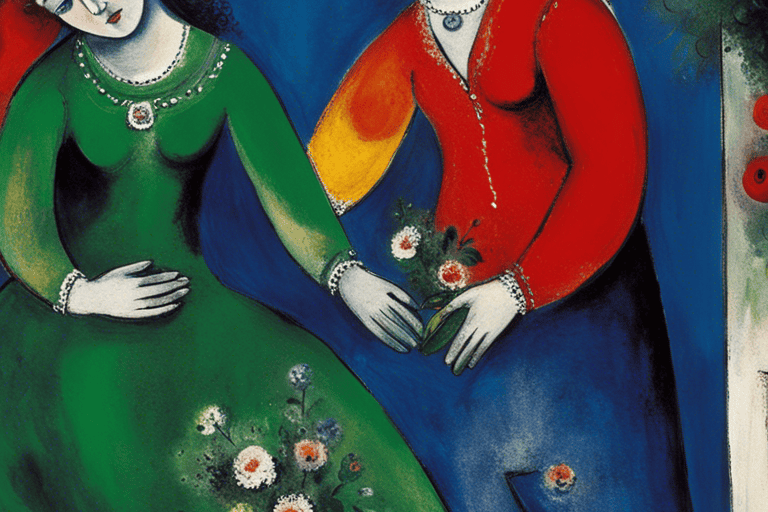
1. A Symbol of Love and Harmony
The symbol of love and harmony is enormous within The Bridal Pair. In this respect, color and form are combined masterfully by Chagall in such a way that the viewer finds themselves in a scene where the bride and groom are locked in a dance together amidst the magic of romance.
2. Cultural Influences and Symbolism
The personal, eccentric mode of representation that underpins Chagall's treatment is inextricably linked to the Eastern European Jewish background that fills his work with rich cultural iconography. This canvas is just strewn with signs of fertility, prosperity, and happiness, and it intrigues the viewer, inviting one to investigate levels of meaning inscribed into this painting.
3. Artistic Technique and Expression
The ethereal floating figures and dreamlike images in The Bridal Pair are enlivened by just that. The ethereality of the painting, coupled with Chagall's bold use of color and symbolism, creates a visually stunning tableau that resonates with viewers on a profound emotional level.
4. Historical Significance
Among the most famous of Chagall's paintings, The Bridal Pair is not only a phenomenal work full of allegorical content concerning modern art and form but also has become an integral part of the distinguished collection at the Guggenheim Museum.
5. Inspirational Quotes
"The Bridal Pair is a beautiful example of the extraordinary power of love and the human spirit, a call for exploration and discovery of universal themes of joy, unity, and hope." - Victoria Lee, Art Critic
"Chagall's visionary artistry in The Bridal Pair is a transcendent work that speaks across time and culture, evidence of the power of creativity and imagination." - Art Historian, Daniel Ortiz
Klimt's Gold Period
Analyzing Klimt's Golden Period at the Guggenheim - One cannot help but get inside the mesmerizing world of Gustav Klimt's Gold Period in the Guggenheim Museum. This opulent and very detailed stage in art reveals some of Klimt's most famous works that continue to enthrall art lovers worldwide.
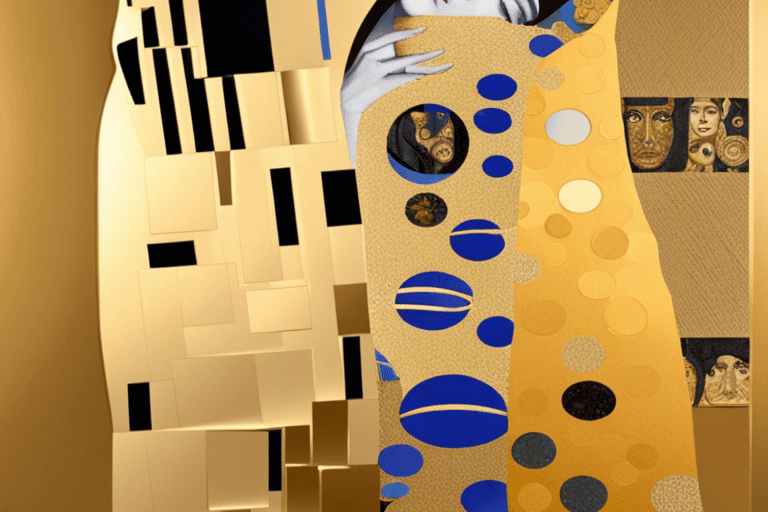
1. The Kiss (Der Kuss)
"The Kiss," for which he is hailed, remains the personification of Klimt's unique style during his Gold Period and is part of the museum's collection. In this painting, sensuality can be understood as its symbolism, with a couple in a passionate embrace against a background radiant in patterns of gold leaf.
2. Adele Bloch-Bauer I
Another of the prime works that saw the light during the Gold Period was the powerful portrait of Adele Bloch-Bauer I, commonly known as the "Woman in Gold," which shows Klimt's ability to represent character and beauty through detailed golden embellishment.
3. Judith and Holofernes' Head
The artwork "Judith with the Head of Holofernes" speaks volumes in its potent representation of feminine strength and power. The very realization of this painting, inspired by the courage and determination in Judith's spirit, is itself proof of Klimt's power to tell complex stories through his very personal artistic vision.
4. Fulfillment (Die Erfüllung)
"Fulfillment" is the painting in which all the wants, dreams, and desires accumulate. The dazzling gold leaf and minute details in this painting render it impossible not to be beguiled into a world of exquisite beauty and reflection, pointing out how meaningful was Klimt's comprehension as an artist.
5. Danaë
"Danaë" is just amazing: it depicts the mythological princess and mother of Perseus in a golden shower of coins. In this work, we see once again the themes that were so characteristic of Klimt, such as love, desire, and the divine. Those who observe it feel closer to human sentiments.
6. Expectation (Die Erwartung)
In "Expectation," Klimt pensively examines the concepts of anticipation and yearning through a magnificently riveting woman who is lost in thought. With the minute work and symbolic motifs in this painting, there is an element of mystery and intrigue to this piece that catches the imagination.
7. Portrait of Eugenia Primavesi
The portrait of Eugenia Primavesi is a confirmation of Klimt's talent in capturing the essence of his subjects through his intricate and decorative style. This portrait stands as a testament to his unique ability to blend realism with ornamental richness.
Hilma af Klint: Pioneer of Abstraction
Long before abstract art was an old hat, Swedish-born Hilma af Klint, born in 1862, had been its pioneer. It's her innovative approach and profoundly spiritual inspiration that gave her a leading role in the field of abstraction.

Early Life and Influences
Hilma af Klint started as an artist through the tutoring of traditional academic pedagogy by learning how to portray and paint landscapes. It was, however, in the late 19th century that her work took a different dimension after coming into contact with spiritualism and the esoteric. Based on spiritualist philosophies and theosophy, af Klint began to explore the spheres lying beyond human beings' physical sight; hence, her creations were those works that avoided conventional representation.
Paintings of the Temple
Among the most significant oeuvres of af Klint are the works of the series known as the Paintings of the Temple. To date, abstract compositions—large scale in size—have been created due to trance-like meditation that would guide messages received by the spiritual world. Vibrant colors and complex forms go hand in hand in these paintings, showing af Klint's deep attachment to the metaphysical and her quest to explain the unseen visually.
Recognition and Legacy
All this while she worked in relative obscurity, and only recently have her outstanding contributions to abstract art been recognized. Her work highlights the Eurocentric discourse promoted in modern art history and the importance of acknowledging voices and perspectives in the art world. Today, af Klint's art continues to captivate audiences with its mystical allure and profound exploration of the unknown.
"The artist should paint not only what he sees before him, but also what he sees within him." – Hilma af Klint
Cy Twombly's Large-Scale Paintings
Discover the Fascinating Large-Scale Paintings of Cy Twombly
The extensive series of paintings at the Guggenheim Museum, proof of an artist's strength and talent, has made Cy Twombly well-known for his expressive, powerful, and emotionally loaded works. Come with us and plunge headlong into the fantastic world of Twombly's creations that will leave the audience in awe.

1. Cy Twombly Introduction
Cy Twombly was an American painter. He had developed a technique for associating calligraphy, graffiti, and gestural markings within his art pieces. His works were massively scaled to the size of murals and represented feelings and thoughts of great immensity.
2. The Artistic Vision
Twombly's large-scale canvases feature dynamic compositions with spontaneous brushwork, going beyond any sense of a traditional art object. Every line on the canvas represents his reflection upon inner thoughts and experiences.
3. Themes and Motifs
Mythological, historical, and amorous themes are interwoven in Twombly's works to make up a dense tissue of narrativity that has invited many an inquiry into its multifarious dimensions to read into and interpret the artwork.
4. Technique and Process
Here, Twombly applied various kinds of media, such as oil, crayon, and graphite, to create layers with texture in them, hence reflecting small pieces of information from his creative process and high emotivity.
5. The Art World Impact
Cy Twombly's great paintings have indeed made an indelible mark on the world of art. They have influenced generations of artists through his very expressive painting.
6. Guest Experience
Staring at the face of Twombly's monumental canvases at the Guggenheim Museum, a viewer's experience can come exceedingly close to feeling religious as he is immersed in a plane of symbolism and visual poetry.
7. Artistic Legacy
Cy Twombly, in whatever way, succeeds by marshaling his legacy into being inspiring and provocative within the world of contemporary art because of its astonishingly vast potential for artistic expression.
8. Art Critic's Perspective
Many critics have considered Twombly's large-scale paintings powerfully emotive and intellectual, with the ability to leave an indelible mark on the art scene.
9. Visitor Testimonials
Each mural-sized canvas by Twombly is commonly referred to as transformative, evocative, and profoundly moving in its connection to the audience by visitors to the Guggenheim Museum.
Cy Twombly's large-scale paintings at the Guggenheim Museum can be defined not only as works of art but rather as windows into the soul of the artist.
Conclusion
Boasting a rich history and a collection of iconic masterpieces, the Guggenheim Museum is a beacon of artistic brilliance. Ten of the art pieces featured in this blog testify to human creativity and ingenuity, capturing all that lays eyes upon them. Each—from the avant-garde works by Picasso to the thought-provoking installations of Kandinsky—sings a different tale that permeates the halls of this museum.
Step into these worlds of art, sink in, and enjoy the beauty and depth of expression. Let masterpieces inspire you and ignite your creativity; let them trigger new ideas and new perspectives for you. Visit the Guggenheim Museum so that you can see these beautiful pieces of art for yourself, and then let your spirit be led into a world where.
FAQ
What famous artists have had exhibitions at the Guggenheim Museum?
Famous artists whose masterpieces are included in the Guggenheim Museum are Pablo Picasso, Vincent van Gogh, Andy Warhol, Wassily Kandinsky, and Jackson Pollock.
What makes a piece of art iconic?
There are many elements that can make a work of art iconic: historical impact, cultural influence, artistic style; and it may also be recognized for innovation and creativity, with power to emotionally affect viewers. An iconic art piece will have very broad visual appeal, be critically acclaimed, and capture the public's eye.
How can I visit the Guggenheim Museum?
You will be able to purchase advance tickets to the Guggenheim Museum on the website of the museum and also at the ticket desk. You can also reach the museum via public transport at 1071 5th Ave, New York City.
For what is the Guggenheim Museum famous?
The Guggenheim Museum is one of the best contemporary art collections harbored in New York City and bears an iconic architectural design by Frank Lloyd Wright. The architectural feature that describes the form of the museum is the unique spiral design, with the skylight accentuating its visibility to guests in a fully immersive experience. Some of the most famous art pieces in the Guggenheim's collection include works from Pablo Picasso, Vincent van Gogh, and Jackson Pollock.
How do I appreciate iconic works of art?
- Get to know who the artist is and something about their background. Being aware of the context in which the piece was created might allow you to understand and appreciate the art better.
- Take it slow and observe the work from various angles: Pay attention to details; pay attention to how the artist has worked.
- Consider the emotions or messages that the artwork evokes. What does the artist want to communicate to their audience?
- Read the placard or description of the work to learn more about it.
- Talk to one of the museum guides or curators for additional knowledge.
- Go on a guided tour or lecture on the work or artist.
- Research and compare it to other works by the same artist or that period or in the same style or movement.
- Personal Response: Pay attention to your reaction to the work of art.
What are some lesser-known art pieces at the Guggenheim Museum?
The Guggenheim Museum has a lot of art pieces that are lesser known and pretty interesting when explored. Among them, one would find the glass works of Josef Albers, which give a break from his more famous "Homage to the Square" paintings, full of innovation in color and form in a different medium. In addition, "Migrating Objects" is a showcase event focused on Peggy Guggenheim's collections from non-Western art emanating from Africa, Oceania, and the Americas. It comprises 35 rarely seen artifacts among masks and sculptures, placed in contexts that challenge traditional Western narratives. This thus helps to present lesser-known pieces for a richer and more diverse understanding of the museum's vast collection.
Citations:
[1] https://www.guggenheim.org/articles/findings/the-little-known-glass-works-of-josef-albers
[2] https://www.guggenheim.org/artwork
[3] https://www.guggenheim.org/exhibition/site/peggy-guggenheim-collection
[4] https://www.guggenheim.org/video/artwork-anthology-vincent-van-gogh-landscape-with-snow-1888
[5] https://www.guggenheim-venice.it/en/whats-on/exhibitions/migrating-objects/
What are some hidden gems in the Peggy Guggenheim Collection?
Among the several lesser-known pieces within the Peggy Guggenheim Collection in Venice are:
-
Works on paper: There are over 70 works on paper by some of the major artists of the 20th century, many of which rarely have been seen [1]. Much of what is Drawings and sketches provide an insight into the creative processes and experimental techniques used by artists.
-
Ethnic art: Peggy Guggenheim collected a number of oriental and ethnic works from Africa, Oceania, and the Americas: masks, human figures, birds, and other exotic objects are scattered everywhere in the museum[5].
-
Temporary Loans: The Museum contains a large amount of sculptures and artworks on temporary loan, making the experience dynamic for visitors. These have recently included works from contemporary artists such as Jenny Holzer, Alexander Calder, and Anish Kapoor[5].
-
Italian Futurist art: Great works from the Mattioli Collection of early twentieth-century Italian art include works by Boccioni, Modigliani, and Severini. The works bear testimony to this dynamic Futurist movement [5].
-
Peggy's personal items: Not of their own artistic value, Peggy Guggenheim's persona is completed by her personal effects: iconic butterfly sunglasses and colored dresses from Mexico and India that help give meaning to her style.
-
Garden sculptures: The museum's sculpture garden contains pieces by artists like Arp, Giacometti, Marini, Barbara Hepworth and Henry Moore. These pieces are less frequented by most people outside the building to generally create a serene setting to reflect on modern art[5].
-
Nasher and Schulhof gifts: To replace the inventory lost with Peggy's death, different gifts have since been made to the collection, such as the Nasher and Schulhof collections in 2012, which added new dimensions to the museum's holdings [3]. It is these hidden gems alone that bring about the diversity and changeability of the Peggy Guggenheim Collection to reality, where a visitor can discover lesser-known aspects concerning 20th-century art alongside its more famous masterpieces.
Citations:
[1] https://www.guggenheim-venice.it/en/whats-on/exhibitions/revealing-papers/
[2] https://www.guggenheim.org/exhibition/site/peggy-guggenheim-collection
[3] https://www.visititaly.eu/art-and-culture/peggy-guggenheim-collection-venice-how-to-visit-it
[4] https://www.tripadvisor.com/Attraction_Review-g187870-d196473-Reviews-Peggy_Guggenheim_Collection-Venice_Veneto.html
[5] https://tammytourguide.wordpress.com/2017/10/24/the-shock-of-the-new-peggy-guggenheim-collection-venice/
[6] https://www.youtube.com/watch?v=4LyUC0pPXBE





